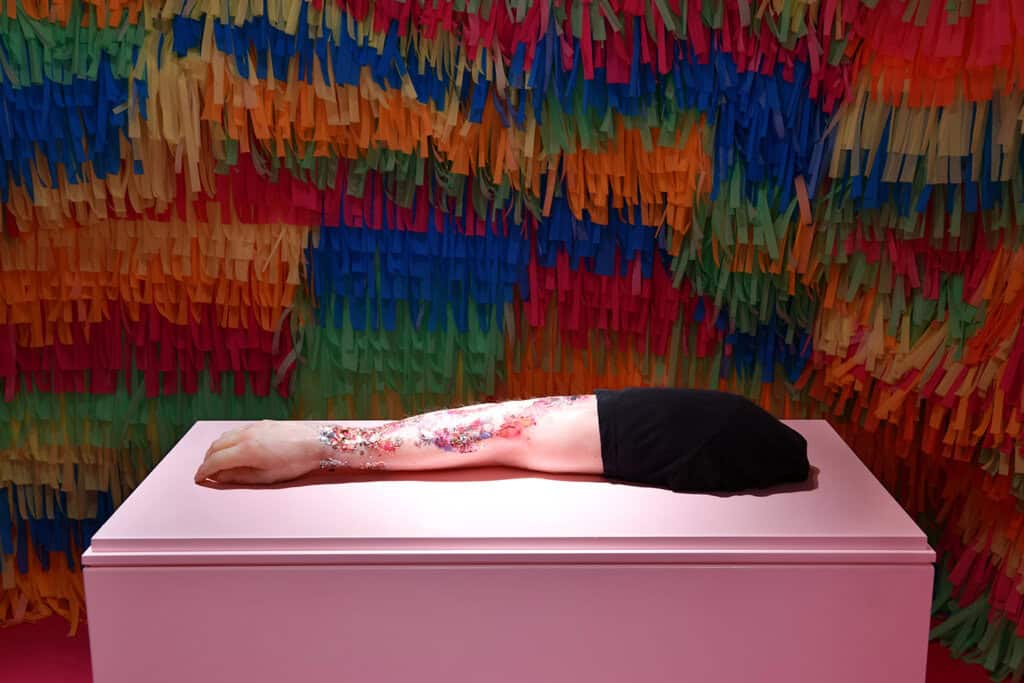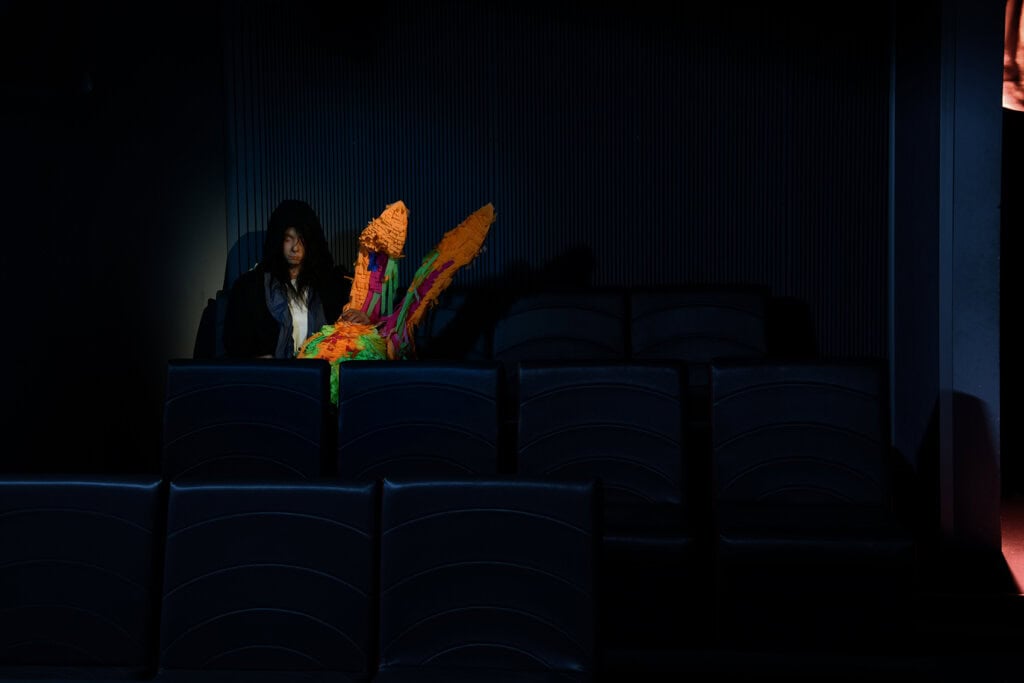Lali Fruheling: Dawn
Curator: David Frenkel
21/06/2024 -
11/01/2025

In the exhibition Dawn, Lali Fruheling (b. 1982) performs a laborious mourning ritual of sorts, starring the remains of a collapsed life in two adjacent spaces. Fruheling’s works are seductive and dazzling, prancing around morbid kitsch and unresolved violence as if they were enchanted. It is pop, sparkling with excessive sweetness, a romantic theater over which she sprinkles dark flakes of dream. Sensual beauty, grace, pain, and horror are inextricably intertwined.
The installation is revealed from the corridor and we are invited
to peek in, to a crowded, intimate children’s room. On a pedestal rests
a man’s arm with a rolled-up sleeve, exposing strands of male hair,
together with a compact, festive array of colorful children’s tattoos,
made to fade shortly after being applied. Next to it, on the carpet, is a
self-portrait of sorts in still life format, cast by the artist in her hyper-realistic style. Another incarnation of the failure of love awaits us in the
screening room. Romance will fade despite the Hollywood promise
for a dawn of a new day.
Fruheling’s practice is based on a long tradition of wax sculptures
used in religious worship, in science, as well as in spectacular
cabinets of curiosities. French thinker Maurice Blanchot remarked
on the connection between the nature of the image and the corpse:
“The image does not, at first glance, resemble the corpse, but the
cadaver’s strangeness is perhaps also that of the image. What we
call mortal remains escapes common categories. Something is there
before us which is not really the living person, nor is it any reality at
all. It is neither the same as the person who was alive, nor is it another
person, nor is it anything else.”*
The room’s ceiling is covered by a disassembled cardboard
piñata, with colored strips of paper dangling from it. It unfolds like a
spreading mushroom, already broken open to extract its assortment
of party gifts. The dissonant tension embedded in the piñata can
be seen as the engine underlying Fruheling’s exhibition. The piñata
encapsulates, in an innocent, festive envelope, both the latent objects
of desire and the instinctive, violent impulses seeking cathartic outlet.
The object, which is used in religious celebrations and other parties,
comes in a variety of forms and boasts numerous origins. In one of
its Catholic versions, for example, the piñata represents evil, and the
“blind” worshipper fights the deadly sins and Satan’s temptations with
his eyes blindfolded. And lo, here, in Fruheling’s work, the piñata has
swollen to room dimensions, and it seems that we, too, are invited
to join the destructive binge, to stretch out our hand and knock down
the walls of the house.
* Maurice Blanchot, The Space of Literature, trans. Ann Smock (Lincoln, NE: University of Nebraska Press, 1982), p. 256.






Installation photographs: David Frenkel

